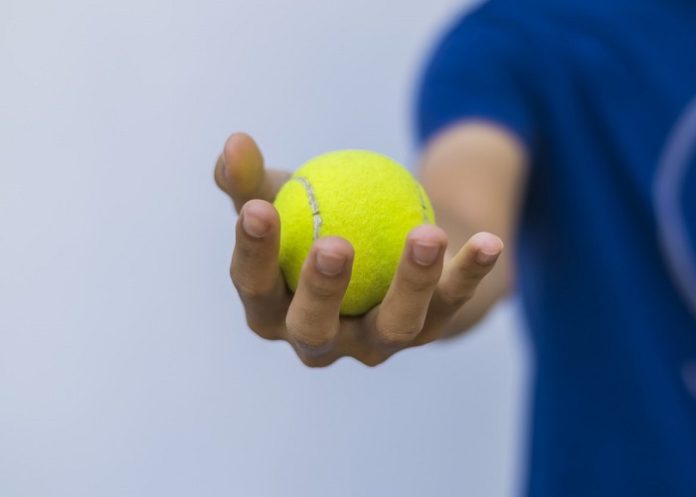A quick test of strength with a tennis ball may be able to tell you if you’re going to live to 100-years-old, according to experts, who suggest that it is possible to slow down the decline of your body.
Physicians have found that a person’s grip is a good indicator of their health and longevity, and can help to assess overall musculoskeletal strength – so how hard you can squeeze a tennis ball might tell you whether you’ll make the century mark or not.
Grip strength is the amount of force with which a person can squeeze their hand, but by around the age of 50, it tends to decline, due to the natural loss of muscle mass.
“You can’t prevent the decline, but you can slow it down,” Jennifer Schrack, an epidemiologist and director of the Centre on Ageing at Johns Hopkins, told TIME.
A Finnish study recently found that participants who became centenarians had the highest grip strength, compared with others in their study.
However, said the researchers, it can also be indicative of biological age, indicating whether the body is functioning better or worse than its chronological age.
More muscle strength could be good for survival, while weaker muscle strength makes it more likely a person will die sooner if they develop a chronic medical problem.
Other studies have linked a decline in grip strength to conditions that include heart disease, arthritis, type 2 diabetes, cancer and osteoporosis.
“This has led grip strength to be considered an important biomarker when assessing health, particularly in older adults,” UCLA Health said.
These and related findings have led to methods of assessment like the tennis ball “squeeze test”.
“Simply squeeze it for as long as you can before your grip fatigues. Being able to maintain a maximal squeeze on something like a tennis ball for 15-30 seconds would be a good standard to strive for,” said Joshua Davidson, a strength and conditioning researcher at the University of Derby.
The test works the hand muscles. UCLA Health also recommends wringing out a wet towel, hanging from a pull-up bar, lifting a weight with pinched fingers and carrying dumbbells as you walk, to improve your grip strength.
“These work various combinations of muscle groups and will improve your crush, pinch and support grips,” its doctors said.
Study details
Midlife muscle strength and human longevity up to age 100 years: a 44-year prospective study among a decedent cohort
Taina Rantanen , Kamal Masaki, Qimei He, G Webster Ross, Bradley Willcox, Lon White.
Published on 4 May 2025
Abstract
We studied prospectively the midlife handgrip strength, living habits, and parents' longevity as predictors of length of life up to becoming a centenarian. The participants were 2,239 men from the Honolulu Heart Program/Honolulu-Asia Aging Study who were born before the end of June 1909 and who took part in baseline physical assessment in 1965-1968, when they were 56-68 years old. Deaths were followed until the end of June 2009 for 44 years with complete ascertainment. Longevity was categorized as centenarian (≥100 years, n = 47), nonagenarian (90-99 years, n = 545), octogenarian (80-89 years, n = 847), and ≤79 years (n = 801, reference). The average survival after baseline was 20.8 years (SD = 9.62). Compared with people who died at the age of ≤79 years, centenarians belonged 2.5 times (odds ratio (OR) = 2.52, 95% confidence interval (CI) = 1.23-5.10) more often to the highest third of grip strength in midlife, were never smokers (OR = 5.75 95% CI = 3.06-10.80), had participated in physical activity outside work (OR = 1.13 per daily hour, 95% CI = 1.02-1.25), and had a long-lived mother (≥80 vs. ≤60 years, OR = 2.3, 95% CI = 1.06-5.01). Associations for nonagenarians and octogenarians were parallel, but weaker. Multivariate modelling showed that mother's longevity and offspring's grip strength operated through the same or overlapping pathway to longevity. High midlife grip strength and long-lived mother may indicate resilience to aging, which, combined with healthy lifestyle, increases the probability of extreme longevity.
See more from MedicalBrief archives:
Evaluating grip strength as a screening tool to identify risk of early diabetes
Weak grip a strong predictor of metabolic disease and disability

